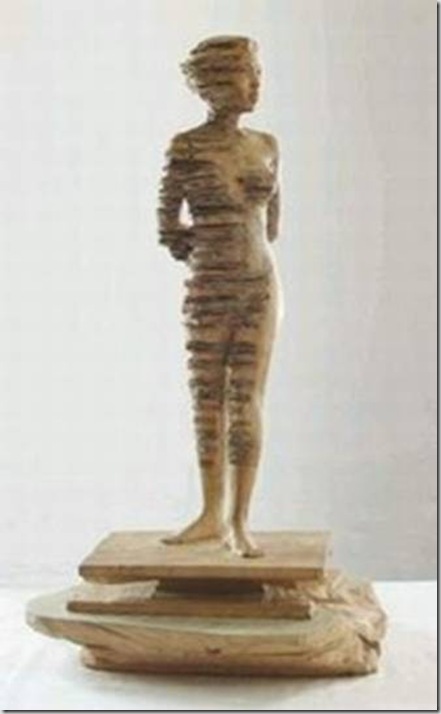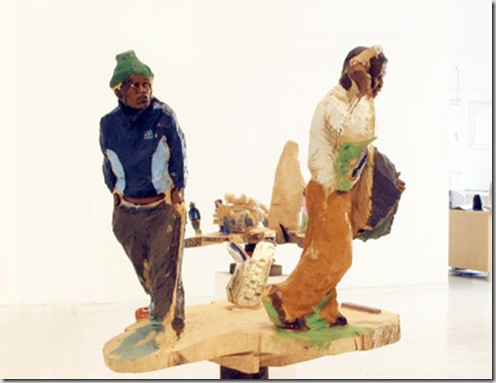Tania mainly uses wood as a medium for sculptures based on the human form, in a tradition of woodcarving that is probably as old as humankind itself. It is a visual language most viewers are well acquainted with, and therefore an expressive and communicative means not hindered by the shock of the novelty or method. The sculptor therefore feels he has carte blanche and finds the age-old tradition liberating rather than restrictive of expression in this medium.
Tania's residence in Africa has greatly affected his European roots both in life and work. Although he is strongly influenced by traditional European carving he feels that it has a conventionalised character. Notions of skill, craftsmanship, ethics, thematic conventions, tradition etc lead it to contrast sharply the apparently freer expressive character of African carving, which he recognizes to be no less skillful. Tania hopes to merge the two styles.
African carving has great freedom of technique: any material or tool suitable to the expression is used. In his work Tania uses found bits of wood (perhaps with old paint), line (pencil, pen), paint, glue, carving marks, soil etc to manipulate the carved form. If the desired effect is achieved the result is a dialogue between illusion and the 3D form.
On a recent show at the João Ferreira Gallery seven sculptures are exhibited, all related in scale and theme. These are small, intimate environments with the occupants absorbed in private moments, which become the indicators of a narrative. This narrative and its inherent ambiguities are left to the viewer's discretion. Tania views the subject of the show as metaphorical of his own internal dialogue, concerning his life and his work.
The sculptor intends that the character and significance of each individual piece is altered by the other pieces, or, in reverse, that the narrative is deconstructed by a combination of mediated images. The relieves a single work from becoming a finite statement, much like the decay of an ancient work of art relieves it of its intended significance, strengthening its form and human expression as the cultural motive fades.
Egon Tania
Double Portrait, 2000, Jacaranda wood, redivory wood, 35 X 50 X 23cm
Double Portrait, 2000, Jacaranda wood, redivory wood, 35 X 50 X 23cm
Egon Tania
Girl and Man on a Chair, 2002, Jacaranda wood and paint, 155 X 40 X 40cm
Girl and Man on a Chair, 2002, Jacaranda wood and paint, 155 X 40 X 40cm
Egon Tania
Girl on a Bentwood Chair, 2001, Jacaranda wood and paint, 155 X 40 X 30cm
Girl on a Bentwood Chair, 2001, Jacaranda wood and paint, 155 X 40 X 30cm
Egon Tania
Man at a Table, 2001, Jacaranda wood and paint, 160 X 50 X 50cm
Man at a Table, 2001, Jacaranda wood and paint, 160 X 50 X 50cm
Salt River Muse
Jacaranda Wood
Jacaranda Wood
Herman
Jacaranda Wood
Jacaranda Wood
Egon Tania
Circle, 2005
Jacaranda wood and enamel
Circle, 2005
Jacaranda wood and enamel
Egon Tania
Circle, 2005
Jacaranda wood and enamel
Circle, 2005
Jacaranda wood and enamel
Egon Tania
Circle, 2005
Jacaranda wood and enamel
Circle, 2005
Jacaranda wood and enamel












Nessun commento:
Posta un commento